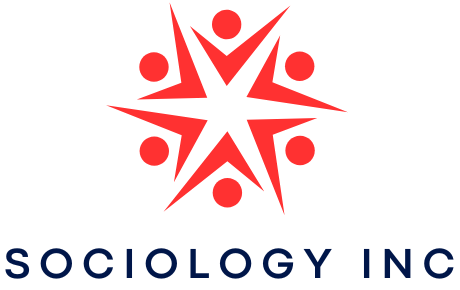When I first moved across the country for graduate school, I thought I understood what migration meant. Pack your bags, hop on a plane, start over somewhere new. Simple, right? Wrong. What I discovered through studying the sociology of migration and mobility is that human movement is one of the most complex social phenomena we face today, shaped by everything from global economics to family dynamics to climate change. Discover how human movement shapes our interconnected world and communities.
Migration patterns tell us more about society than almost any other lens we could use. When sociologists examine why people move, where they go, and how they adapt, we uncover the invisible threads that connect local communities to global forces. The sociology of migration reveals how individual decisions ripple outward, creating waves of change that reshape entire regions.
Think about your own family history for a moment. Chances are, someone in your lineage moved for better opportunities, fled conflict, or followed love to a new place. These personal stories, when multiplied across millions of people, create the migration flows that define our modern world. What fascinates me most about studying human mobility is how these intimate, personal choices become part of massive social transformations.
The push and pull factors that drive migration have evolved dramatically over the past few decades. Economic migration remains a dominant force, with people seeking better employment opportunities and higher wages in developed countries. But environmental migration is becoming increasingly important as climate change displaces communities from their traditional homes. Political migration continues to create refugee flows, while educational migration brings international students to universities worldwide.

Social networks play a crucial role in migration patterns that many people do not fully appreciate. When I interviewed immigrants for my research, I was struck by how often they mentioned a cousin in Chicago, a neighbor who had moved to Toronto, or a former classmate working in London. These connections create migration corridors that channel people toward specific destinations, making some cities magnets for particular ethnic or national groups.
The sociology of migration also examines what happens after people arrive in their new homes. Integration processes vary enormously depending on the receiving community, the migrants’ backgrounds, and broader social policies. Some migrants maintain strong transnational ties, sending remittances home and maintaining dual identities. Others assimilate more completely into their new societies, though this process often takes multiple generations.
Digital technology has revolutionized modern mobility in ways that earlier migration theorists could never have imagined. Migrants today can maintain daily contact with family members thousands of miles away, participate in hometown politics through social media, and access services in their native languages from anywhere in the world. This creates what sociologists call transnational social spaces where geographic boundaries become less meaningful.

Temporary migration has become increasingly common, challenging traditional assumptions about permanent settlement. Seasonal agricultural workers, international students, temporary foreign workers, and digital nomads represent new forms of mobility that do not fit neatly into historical migration categories. These circular migration patterns create different social dynamics and policy challenges compared to permanent immigration.
Urban sociology intersects with migration studies in fascinating ways. Cities like New York, London, and Sydney have become super-diverse spaces where hundreds of languages are spoken and countless cultural traditions coexist. This diversity creates opportunities for innovation and cultural exchange, but it also generates tensions around housing, education, and social services.
The COVID-19 pandemic revealed how dependent modern societies have become on human mobility. When borders closed and travel restrictions took effect, global supply chains collapsed, healthcare systems lost essential workers, and families were separated across continents. The sociology of migration suddenly became visible to everyone as we realized how interconnected our world had become through human movement.
Climate migration presents perhaps the greatest challenge for migration sociology in the coming decades. Rising sea levels, extreme weather events, and changing agricultural conditions will likely displace hundreds of millions of people. Understanding these future migration flows requires sociologists to work closely with climate scientists, urban planners, and policy makers to prepare receiving communities and support displaced populations.
What strikes me most about studying migration and mobility is how it reveals both the resilience and vulnerability of human communities. People adapt to new environments with remarkable creativity, but they also face discrimination, exploitation, and cultural loss. The sociology of migration helps us understand these contradictions and develop more humane approaches to managing human movement.
As our world becomes increasingly connected, migration sociology will only grow in importance. Whether we are examining refugee resettlement, international labor migration, or climate displacement, understanding the social forces that drive human mobility remains essential for creating inclusive, sustainable communities in our globalized world.
Reference
Castles, S., de Haas, H., & Miller, M. J. (2020). The age of migration: International population movements in the modern world (6th ed.). Guilford Press.
Faist, T. (2022). The transnational social spaces of migration: Ethnic communities and transnational projects. International Migration Review, 34(2), 168–210.
Glick Schiller, N., & Salazar, N. B. (2013). Regimes of mobility across the globe. Journal of Ethnic and Migration Studies, 39(2), 183–200.

